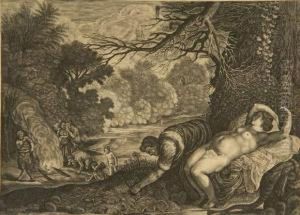Magdalena Van De Passe Paintings
Magdalena van de Passe was a notable Dutch engraver of the Baroque period, born in 1600 in Cologne, which was then part of the Holy Roman Empire. She was the eldest daughter of the well-known printmaker and publisher Crispijn van de Passe the Elder, who played a crucial role in her artistic development. Her family moved to Utrecht when she was a child, and it was in this artistically vibrant city that Magdalena learned the craft of engraving.
Magdalena worked alongside her brothers, who were also trained in the art of engraving. The van de Passe family was a printmaking dynasty, and their workshop was one of the most prominent in Northern Europe during the early 17th century. Despite the limitations placed on women in the art world at this time, Magdalena was able to develop her skills and contribute significantly to the family business. Her works often included portraits, religious subjects, and scenes from mythology.
Her engravings were characterized by a delicate and intricate style, with a detailed approach to textures and shading that was admired by her contemporaries. She was one of the few women of her time to achieve recognition in the field of printmaking. Unfortunately, Magdalena's career was cut short by her death at the young age of 38 in 1638. Her works, however, continued to be appreciated and served as an inspiration for future generations of female artists. Magdalena van de Passe remains a notable figure in the history of Dutch art, particularly in the context of women's contributions to the field of engraving.




